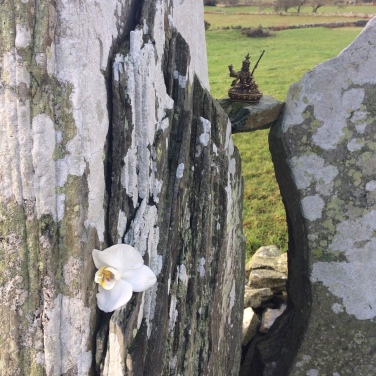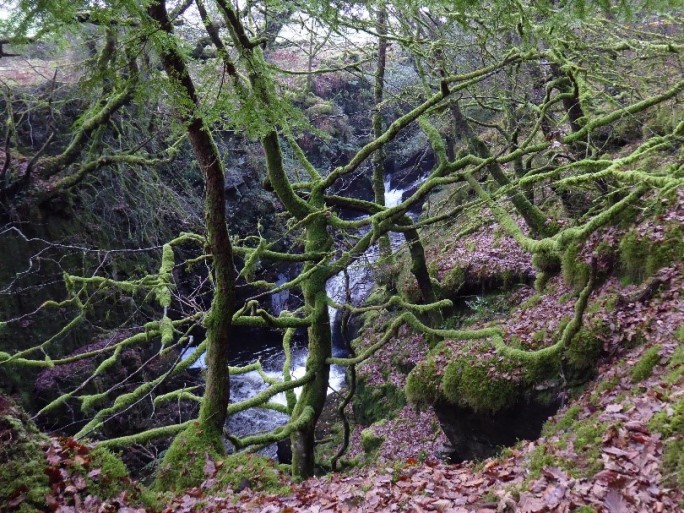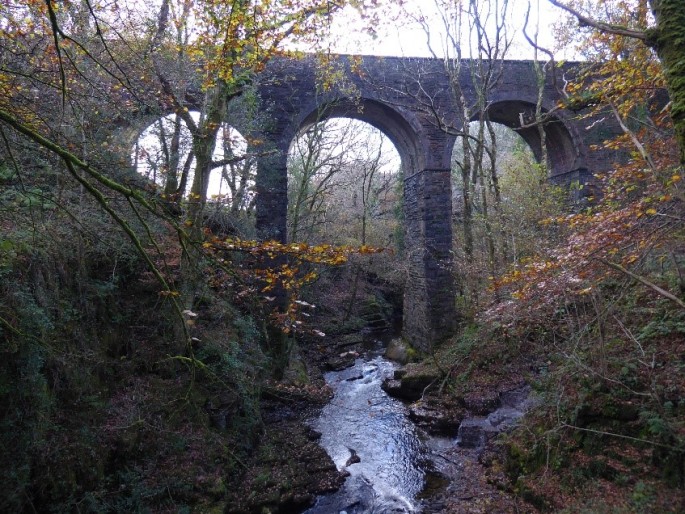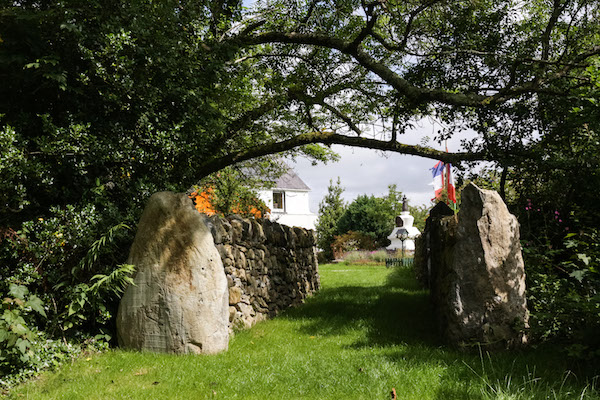
I went to the Hermitage of the Awakened Heart recently and decided to do some pilgrimage. The first place I visited was St. Cybi’s Well which is located very close by a church associated with the same saint. This place can be found at the village called Llangybi. Legend has it that this well has healing powers. I have been feeling in need of healing and rejuvenation lately so I thought that the well could work some magic on me.

It took about an hour to walk there from the Hermitage. I stayed for a while, said some Guru Rinpoche prayers and circumambulated the well. I walked back and felt very tired, even more than I had earlier. By the time I got back I felt so out of it that I went straight to sleep for a few hours, which is unusual for me to be able to sleep during the day even when tired. I’m sure the trip had some effect on me as I felt a new lease of life the next day, which leads me to the next pilgrimage: St.Tudwen’s church.

The following day, one of the residents at the Hermitage mentioned that she had a fold up bike, a funny looking thing usually seen on the underground in London that I thought wouldn’t be up to very much, but to my surprise it took me on quite a journey and even managed a few hills. I ended up cycling over 40 miles, partly owing to my poor sense of direction.
After a much needed Guinness, panini and coffee at a roadside pub I eventually made it to St Tudwen’s church which is next to a village called Dinas; a name which caused me to mistake Carn Fadryn (a famous Iron Age hillfort very close by) for Dinas Emrys (another famous mountain in Snowdonia) which I had also planned to visit, but didn’t quite have the time.
St Tudwen’s Church is a lovely spot and felt very peaceful to be there especially after the effort to get there. Shame I didn’t remember to ask the farmer for the key to look inside, but still, I circumambulated the church and said Guru Rinpoche prayers. I’m not sure if others in the sangha circumambulations of place other than stupas, but at some point I seem to have adopted this practice of viewing anything sacred as a kind of stupa.
When I first went to a Dharma centre in Scotland called Samye Ling I noticed the Stupa there had a presence as if it was alive, as if it could see me. I also thought the shape suggested drawing energy of life into it, like a lightning conductor through the pointed crown on the top. Later when I became involved with Awakened Heart Sangha with its Enlightenment Stupa at the Hermitage, I heard stupas talked about in much greater detail and with a great sense of reverence and awe.
The way of relating to stupas from what I have heard is as if they are the Buddha in person – and even the shape reflects this. There’s too much to go into on that subject but I like relating the same principles to other place, even places that are not at all seemingly sacred, places that might be un-loved or ugly. I suppose you could even circumambulate a public toilet if you wanted to.
Anyway, I enjoyed the two trips I made and next time hope to make it to Carn Fadryn.
Words and images by Luke Davey.








































